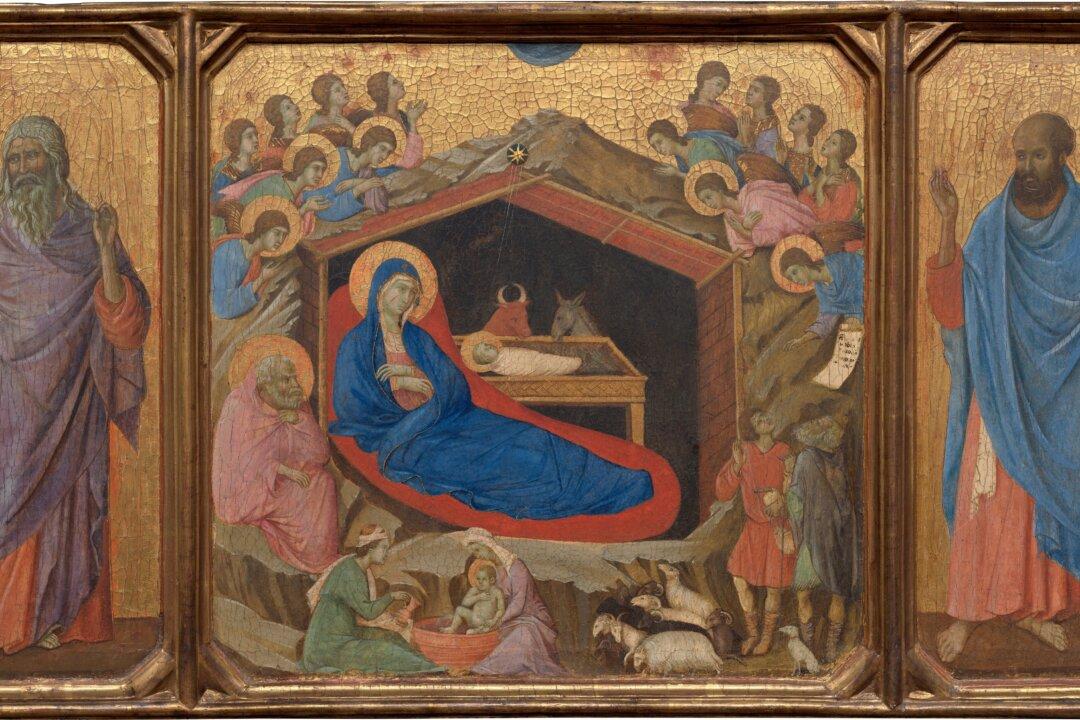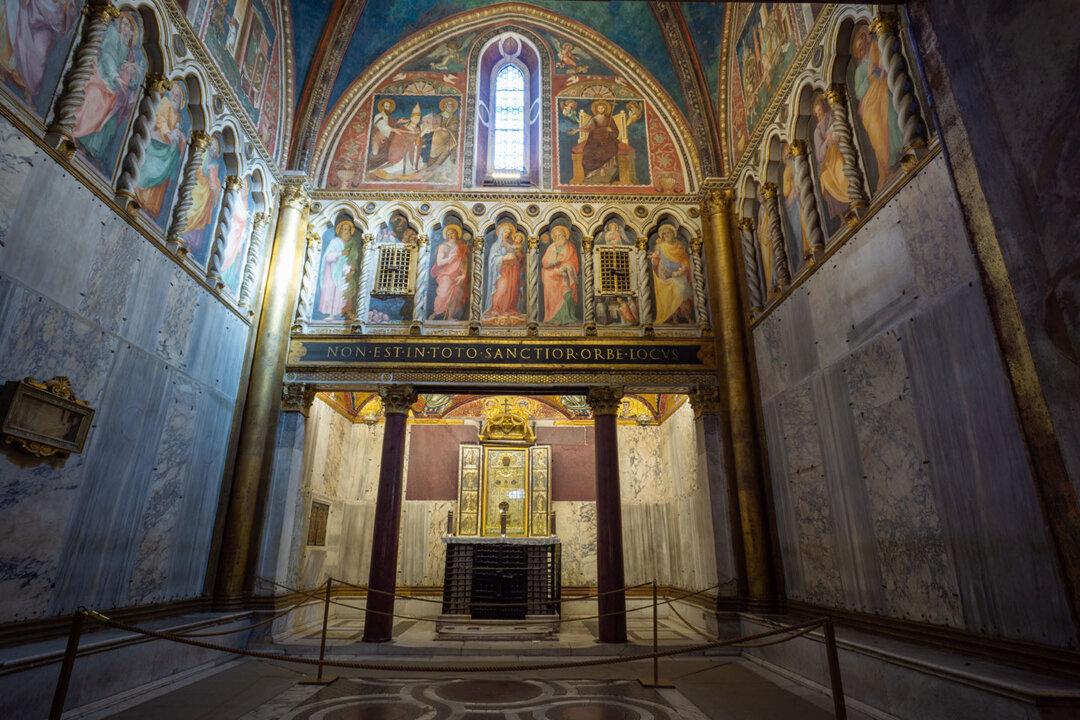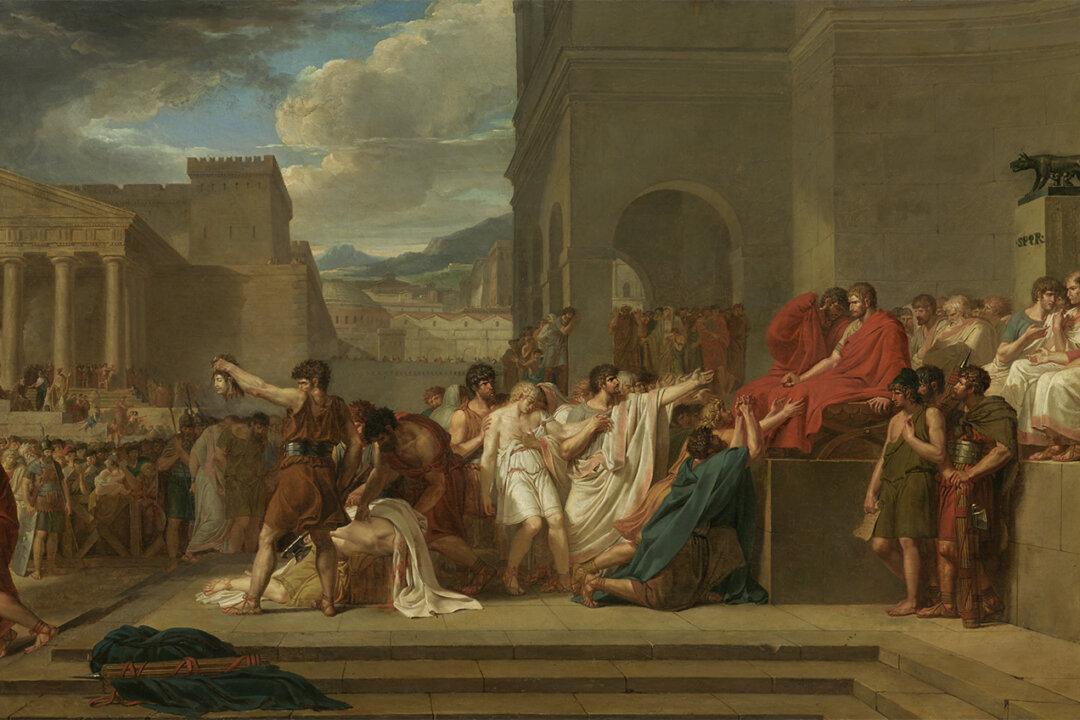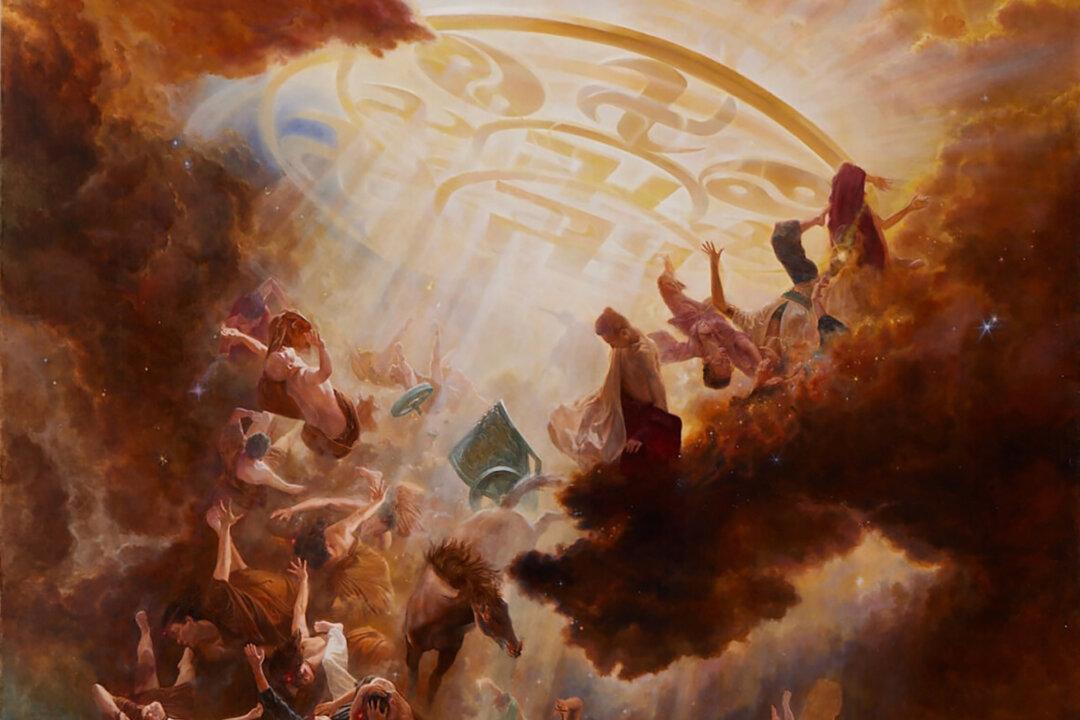Sandro Botticelli (circa 1445–1510) is by now an almost household name for those familiar with Western art. Yet one might be surprised to learn that in the few centuries after the Renaissance, artists largely disregarded him as primitive, medieval, and not on par with the perfection achieved by Raphael and Michelangelo.
Pallas and the Centaur

The monumental mythological painting commonly titled “Pallas and the Centaur” ranks as one of the most extraordinary masterpieces in Botticelli’s oeuvre. Under a rocky cliff and against a distant landscape, two life-size figures pose casually in the foreground. On the left, stands a centaur, a demigod creature from ancient mythology whose beastly nature was often associated with unrestrained passion and lust. On the right, a woman dressed in an elaborate costume takes a strand of the centaur’s curly hair in her hand, as she looks at him dispassionately.
The subject of this strange iconography has been hotly debated for well over a century but still remains a mystery. According to this popular theory, the female figure is identified as Minerva, or Pallas Athena, the Greco-Roman goddess of wisdom. She holds a ceremonial halberd while the centaur carries a loosely strung bow, but there’s no sign of any fighting. The goddess’s evident control of the centaur is often interpreted as representing the submission of the human’s beastly passion to divine reason.
Such a complex iconography reflects well the intellectual milieu of Botticelli’s time. Across the 1400s, Florentine humanists had been discussing precisely these matters of human nature within the context of Christian theology and ancient philosophy. And the discussion culminated during the rule of Lorenzo de’ Medici (1469–1492), statesman, banker, and the most influential and enthusiastic art patron in Renaissance Italy.
The Adoration of the Magi

The coming of three wise men to the birth of Jesus Christ is one of the most familiar episodes in the Bible since the Middle Ages. In the altarpiece, they’re seen gathered at the foot of the holy family offering gifts, while a large crowd of well-dressed spectators stand on the two sides.
But abandoning formulaic depictions of the Magi, Botticelli gave them the features of the Medici. Cosimo the Elder, who had first led the family to its prosperity, poses for the Magus in black, while the figure below him in a bright red robe is identified as his son Piero, the second generation of the Medici head of state. Other members of the family and their friends are found scattered in the crowd, including Lorenzo, his brother Giuliano, and the poet-philosopher Poliziano. On the right side of the painting, the patron of the altarpiece Gaspare del Lama is thought to be depicted. Cloaked in blue and pointing toward himself, he faces the viewer. Botticelli himself also turns from the scene and confronts the viewer with an intent stare, as if inviting us to look at and contemplate the world he created.
Abounding with portraits of contemporaries, the painting thus appears as a miniature of Renaissance Florentine society. Di Zanobi commissioned the altarpiece for his funerary chapel in the prominent church of Santa Maria Novella, easily viewable by the public. The choice of the subject matter, as well as the depiction of the Medici family, speaks to the patron’s wish to publicly announce his association with the powerful bankers. Indeed, di Zanobi’s private chapel was dedicated on Jan. 6, the feast day for the Epiphany, when the Medici would dress up each year as the Magi in celebratory processions.
St. Augustine in His Study

Nevertheless, the widespread pursuit for worldly fame and fortune in Florentine society became ever more concerning for those devoted to a medieval spiritual life, who saw the Medici regime and the humanist culture associated with it as decadent and corrupting. In 1494, after Lorenzo’s death, the Dominican preacher Girolamo Savonarola gathered a large following, took power in the city, and expelled the Medici family. He denounced clerical corruption, despotic rule, and the exploitation of the poor, and called for a renewal of the Christian faith.
Botticelli, a deeply religious artist inspired by Savonarola’s sermons, would in his later years turn away from secular and pagan themes that had preoccupied him in his youth, even supposedly burning some of his own works at the friar’s “bonfire of the vanities.”
The small, intimate painting “St. Augustine in His Study” was completed just around these uncertain times, when Botticelli’s humanist interest in pagan antiquity seemed to have come into an irreconcilable conflict with his deeply felt Christian faith. In an austere, vaulted chamber sits the solitary Augustine of Hippo, a prominent theologian and philosopher who lived in the fourth and fifth centuries. He appears to write quietly in a pocket book, but the used-up quills on the floor and loose sheets of torn paper betray an authorial heart far from being at peace.
Perhaps Botticelli is saying something here: Painting, just like thinking and writing, requires courageous sacrifices and revisions. It’s only through the insistent correction of errors and imperfections that one may continuously surpass oneself and strive toward the achievement of a great mind.





